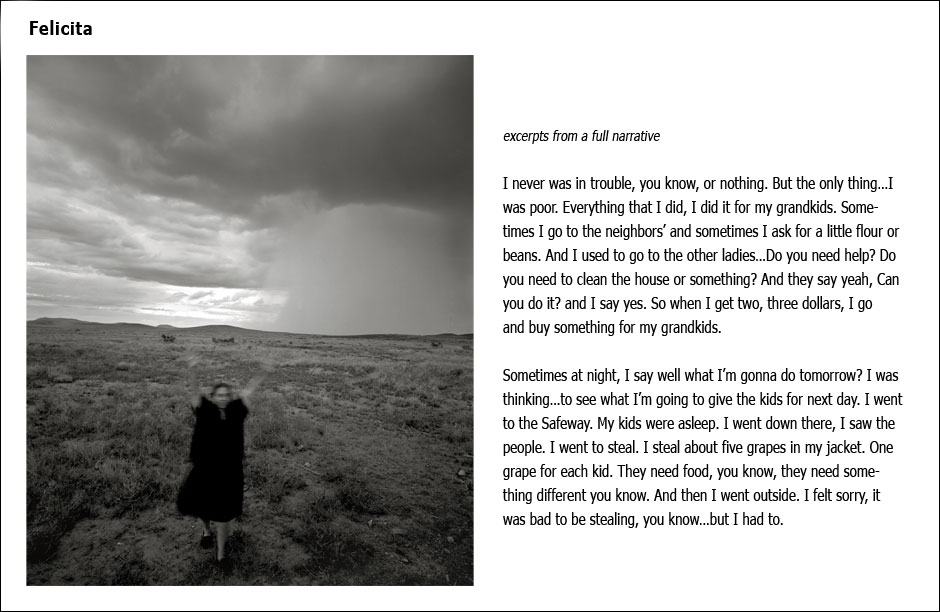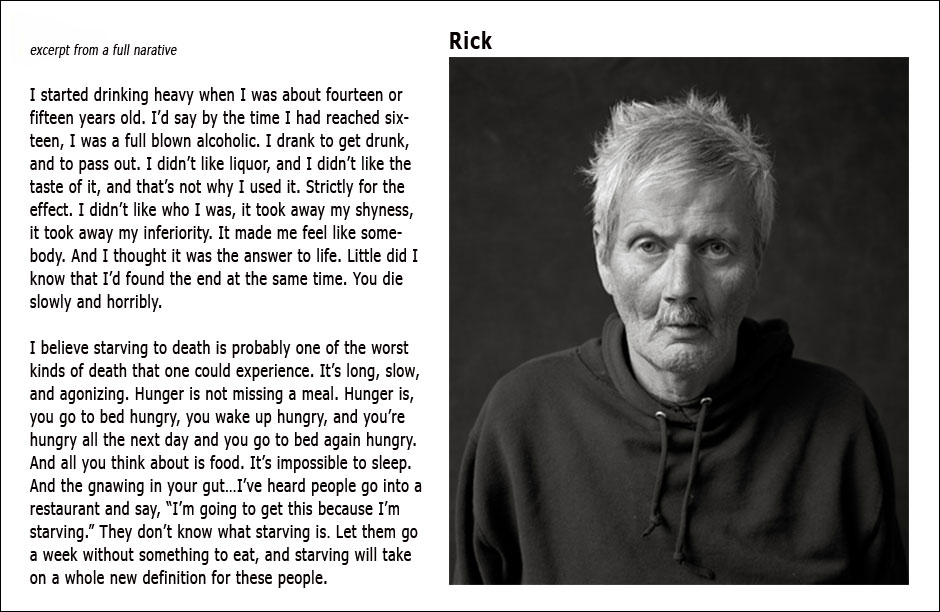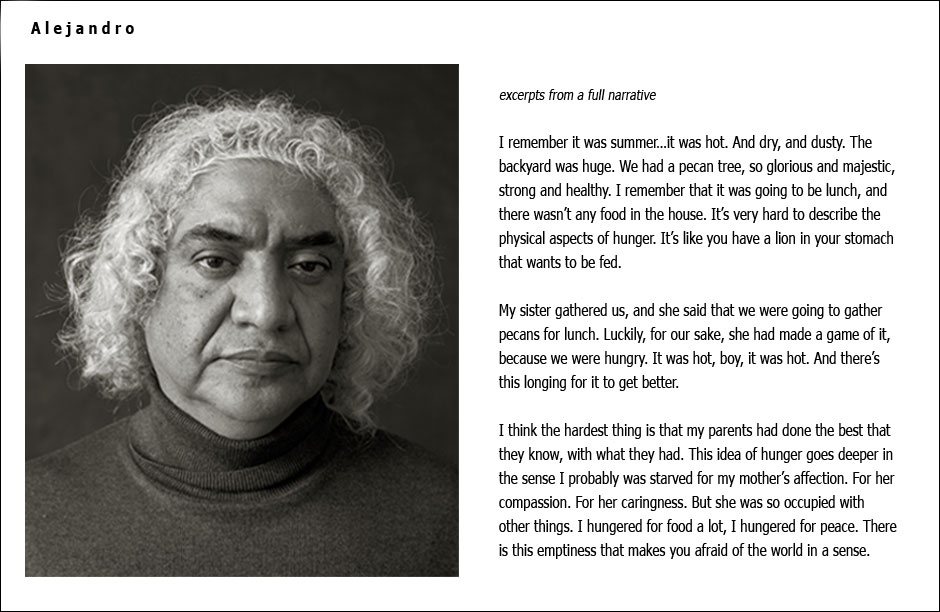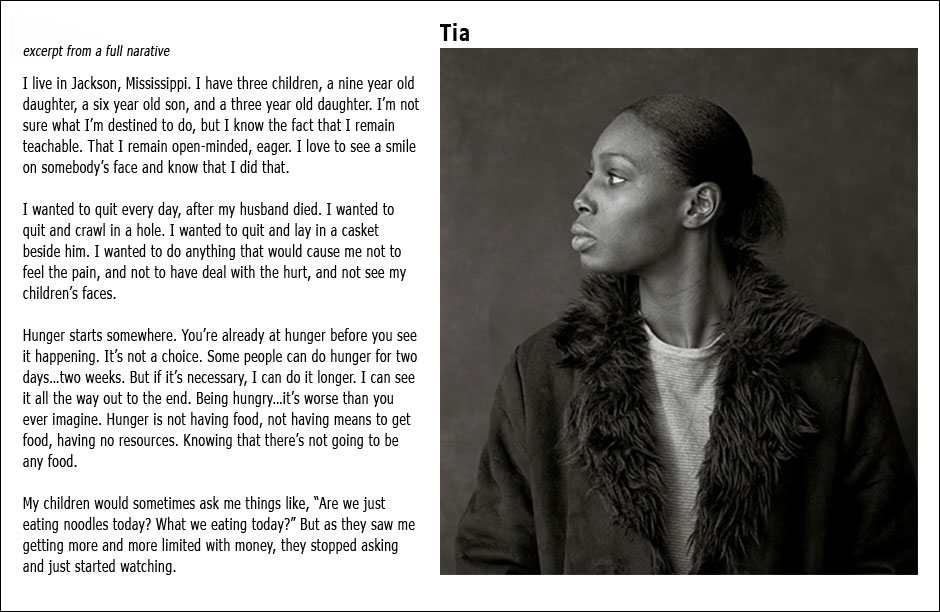PAST ISSUES
 Felicita (2009) from “About Hunger & Resilience” a photo project by Micheal Nye
Felicita (2009) from “About Hunger & Resilience” a photo project by Micheal Nye "Rick" from “About Hunger & Resilience” a photo project by Micheal Nye
"Rick" from “About Hunger & Resilience” a photo project by Micheal Nye "Alejandro" from “About Hunger & Resilience” a photo project by Micheal Nye
"Alejandro" from “About Hunger & Resilience” a photo project by Micheal Nye Tia (2009) from “About Hunger & Resilience” a photo project by Micheal Nye
Tia (2009) from “About Hunger & Resilience” a photo project by Micheal Nye
A Shortage of Democracy, Not Food
By Francis Moore Lappé“There are people in the world so hungry that God cannot appear to them except in the form of bread.” – Mahatma Gandhi
Forty years ago, squirreled away in the basement “Ag” library at U.C. Berkeley, I wanted answers to one question: Why were 960 million people going hungry?
At the time, newspaper headlines and experts from academia to the United Nations had their straightforward answer: Human numbers had hit the Earth’s limits. But using my dad’s slide rule, I put two and two together: Our “modern” farm economy was actively creating scarcity from abundance, in part by feeding a third of the world’s grain to livestock.
I could hardly believe it. Could this Ph.D-less twenty-something be right and the experts wrong? Stuffing my self-doubt, I composed a one-page handout. I assumed that if people just understood that hunger was needless, of course they’d get busy changing the economic rules creating it. The handout became Diet for a Small Planet.
I was right that hunger would worsen unless we dug to its roots. I was wrong, though, about what would happen next.
Four decades on, the World Food Program predicts the number of hungry people in the world will rise this year to what it was at that first Berkeley “a-ha!” moment.
Over these decades, the forces generating hunger from plenty have intensified. Food production has kept ahead of population growth, but now not only do we feed a third of grain and most of soy to livestock, but we’ve turned more than a third of the global fish catch into feed as well. Of course, I couldn’t have guessed we’d also be “feeding” crops to cars via ethanol.
I’d hoped readers of Diet for a Small Planet would see this waste built into the post-World War II food system as only the surface layer explaining hunger. Beneath lies the deeper cause: the scarcity not of food but of democracy. Because no human being chooses hunger, hunger is proof that a person has been denied a voice in meeting survival needs. And, since a say in one’s future is the very essence of democracy, the existence of hunger belies democracy.
And what is killing democracy, while generating hunger? It is a belief system.
The belief is two-fold: first, that an effective market works only by one rule, highest return to shareholder—that is, highest return to existing wealth; and second, that government is anathema to a market’s effectiveness. From this stance, control over resources inexorably tightens to the point that it warps public decision-making to benefit narrow, private ends. We end up with a frightening oxymoron: “privately held government.”
And from it flows what I call “faith-based economics” because it is detached from real-world evidence. History demonstrates that only a government accountable to citizens can keep a market competitive and open so that all citizens are able to access it.
Today’s headlines, though, repeat the myth that weather and the inexorable increase in demand, especially among the new “middle classes” in India and China, explain the crisis—along with the unforeseen consequences of enlisting cropland in ethanol production. Wrong. Our worsening democracy deficit has continued to set the world up for disaster, undermining production and access to food worldwide.
Let us count the ways:
Unaccountable international agencies, including the World Bank and the International Monetary Fund, made loans on the condition that recipient countries reduce public support for local producers and food buyers. So African governments cut help to small farmers, and India said only the poorest of the poor could access its public “fair-price” shops that sell below-market-price grain.
Meanwhile, large agricultural interests in the North secured subsidies—almost half a billion dollars a day—making their grain so cheap its sales undercut markets for poor farmers in the South, ultimately driving many from the land.
And it gets worse. Trade agreements—most notably the 1994 North American Free Trade Agreement—ended tariffs that protected local farmers. In Mexico, for example, more than a million farmers went under in the decade following the agreement.
Then, in recent years, speculators have turned futures trading—set up to protect farmers and wholesalers from extreme weather-caused price swings—into their private bonanza, pushing up the short-term price of food.
Finally, while analysts talk as if the uptick in demand for wasteful grain-fed meat is inevitable, it isn’t. Democracy deficits in India and China have generated massive inequalities, heightening demand for costly grain-fed meat.
With more equitable advancement that empowered rural dwellers, demand for meat could likely be met by small farms using the long-held, ecological, and cost-effective practice of feeding waste, like corn stalks and rice husks, to livestock.
The democracy crisis produces predictable and avoidable tragedy. But forty years later, what keeps me getting up in the morning is how much more we now know about sustainable growing and eating. We can turn today’s tragedy into a breakthrough for common sense and real democracy as we:
•Shift public support to family farmers using sustainable agroecology. A 2007 University of Michigan study concluded that moving globally to sustainable, organic farming methods could increase food output by about 57 percent. A four-year study to evaluate the impact of such practices—involving almost thirteen million farmers and more than ninety million acres in fifty-seven countries—showed on average a 79 percent production increase.
•Grow the number of family farmers. One of the world’s largest democratic social movements, Brazil’s Landless Workers Movement, has succeeded in transferring almost twenty million acres to almost a third of a million rural landless families, creating thousands of new farmers and enterprises and greatly reducing hunger.
Since I wrote this article, hunger has spread faster than ever in history. Now, despite record harvests, over a billion people go hungry. That is many millions more than when I wrote Diet for a Small Planet in 1971. Even here in the United States, half of America’s children will survive on food stamps at some point in their upbringing.
So what is hunger? It is humanity’s most inescapable message. And, what is hunger telling us? That we, the brainiest species, have failed to meet our most basic need, food, because we are creatures of the mind and we lack a key concept our species needs to thrive—that of truly inclusive democracy in which all of us have a voice. That richer form of democracy, which I call Living Democracy, is emerging, Without it, hunger and its needless suffering will continue to spread. With it, our species can grow up and meet not only our first need, food, but other challenges of this unique moment.
Frances Moore Lappé, a longtime writer and voice on hunger, has devoted her life’s work to busting the myths on world hunger and enlightening people on a simple solution. She is the author of sixteen books, the most recent is titled Getting a Grip 2: Clarity, Creativity and Courage for the World We Really Want (Small Planet Media, 2010). In 2001 she started the Small Planet Institute with her daughter Anna Lappé (left). Their mission is to promote a worldwide shift to “Living Democracy” a democracy they define as : “A culture in which citizens infuse the values of inclusion, fairness and mutual accountability into all dimensions of public life.”
